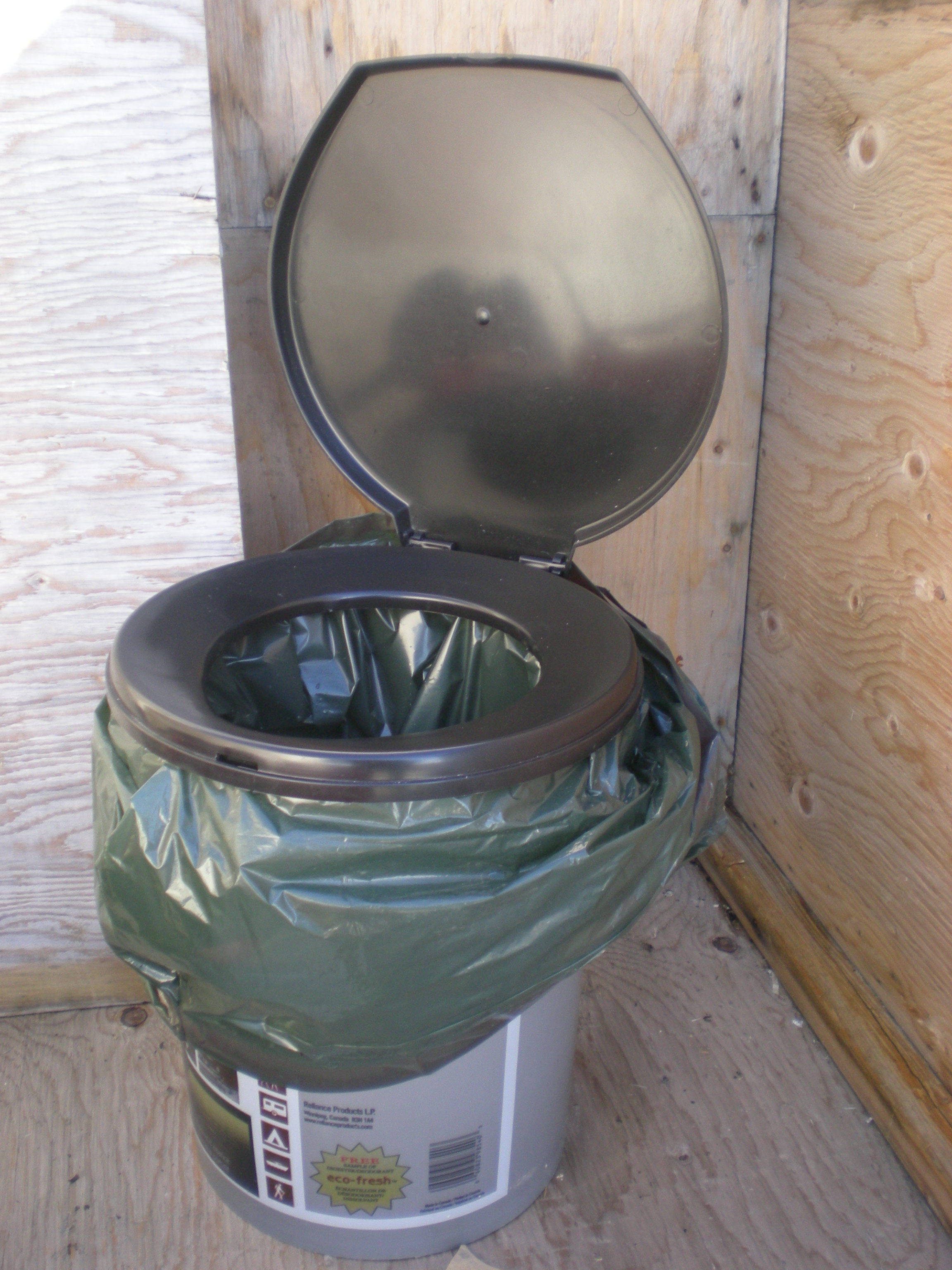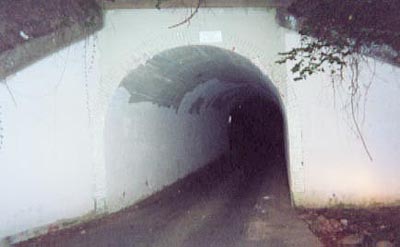|
Outhouse
An outhouse — known variously across the English-speaking world otherwise as bog, dunny, long-drop, or privy — is a small structure, separate from a main building, which covers a toilet. This is typically either a pit latrine or a bucket toilet, but other forms of dry toilet, dry (non-flushing) toilets may be encountered. The term may also be used to denote the toilet itself, not just the structure. Outhouses were in use in cities of Developed country, developed countries (e.g. Australia) well into the second half of the twentieth century. They are still common in rural areas and also in cities of developing countries. Outhouses that are covering pit latrines in densely populated areas can cause groundwater pollution. Design aspects Common features Outhouses vary in design and construction. They are by definition outside the dwelling, and are not connected to plumbing, Sanitary sewer, sewer, or septic system. The World Health Organization recommends they be built a ... [...More Info...] [...Related Items...] OR: [Wikipedia] [Google] [Baidu] |
Pit Latrines
A pit latrine, also known as pit toilet, is a type of toilet that collects human waste in a hole in the ground. Urine and feces enter the pit through a drop hole in the floor, which might be connected to a toilet seat or squatting pan for user comfort. Pit latrines can be built to function without water (dry toilet) or they can have a water seal (pour-flush pit latrine). When properly built and maintained, pit latrines can decrease the spread of disease by reducing the amount of human feces in the environment from open defecation. This decreases the transfer of pathogens between feces and food by flies. These pathogens are major causes of infectious diarrhea and intestinal worm infections. Infectious diarrhea resulted in about 700,000 deaths in children under five years old in 2011 and 250 million lost school days. Pit latrines are a low-cost method of separating feces from people. A pit latrine generally consists of three major parts: a hole in the ground, a concrete slab ... [...More Info...] [...Related Items...] OR: [Wikipedia] [Google] [Baidu] |
Bucket Toilet
A bucket toilet is a basic form of a dry toilet whereby a bucket (pail) is used to collect Human waste, excreta. Usually, feces and urine are collected together in the same bucket, leading to odor issues. The bucket may be situated inside a dwelling, or in a nearby small structure (an outhouse). Where people do not have access to improved sanitation – particularly in Slum, low-income urban areas of developing countries – an unimproved bucket toilet may be better than open defecation. They can play a temporary role in emergency sanitation, e.g. after earthquakes. However, the unimproved bucket toilet may carry significant health risks compared to an improved sanitation system. The bucket toilet system, with collection organised by the municipality, used to be widespread in Developed countries, wealthy countries; in Australia it persisted into the second half of the 20th century. Once the basic bucket toilet has been "improved", it evolves into a number of different systems, ... [...More Info...] [...Related Items...] OR: [Wikipedia] [Google] [Baidu] |
Toilet
A toilet is a piece of sanitary hardware that collects human waste (urine and feces) and sometimes toilet paper, usually for disposal. Flush toilets use water, while dry or non-flush toilets do not. They can be designed for a sitting position popular in Europe and North America with a toilet seat, with additional considerations for those with disabilities, or for a squatting posture more popular in Asia, known as a squat toilet. In urban areas, flush toilets are usually connected to a sewer system; in isolated areas, to a septic tank. The waste is known as '' blackwater'' and the combined effluent, including other sources, is sewage. Dry toilets are connected to a pit, removable container, composting chamber, or other storage and treatment device, including urine diversion with a urine-diverting toilet. " Toilet" or "toilets" is also widely used for rooms containing only one or more toilets and hand-basins. Lavatory is an older word for toilet. The technolo ... [...More Info...] [...Related Items...] OR: [Wikipedia] [Google] [Baidu] |
Fecal Sludge
Fecal sludge management (FSM) (or faecal sludge management in British English) is the storage, collection, transport, treatment and safe end use or disposal of fecal sludge. Together, the collection, transport, treatment and end use of fecal sludge constitute the "value chain" or "service chain" of fecal sludge management. Fecal sludge is defined very broadly as what accumulates in onsite sanitation systems (e.g. pit latrines, septic tanks and container-based solutions) and specifically is not transported through a sewer. It is composed of human excreta, but also anything else that may go into an onsite containment technology, such as flushwater, cleansing materials (e.g. toilet paper and anal cleansing materials), menstrual hygiene products, grey water (i.e. bathing or kitchen water, including fats, oils and grease), and solid waste. Fecal sludge that is removed from septic tanks is called septage. It is estimated that one-third of the world's population is served by onsite sa ... [...More Info...] [...Related Items...] OR: [Wikipedia] [Google] [Baidu] |
Dry Toilet
A dry toilet (or non-flush toilet, no flush toilet or toilet without a flush) is a toilet which, unlike a flush toilet, does not use flush water. Dry toilets do not use water to move excreta along or block odors. They do not produce sewage, and are not connected to a sewer system or septic tank. Instead, excreta falls through a drop hole. A variety of dry toilets exist, ranging from simple bucket toilets to specialized incinerating and freezing toilets. Types Types of dry toilet, listed in approximate order from simplest to most complex, include: * Bucket toilet – The most basic kind of toilet. May have a toilet seat, with or without a lid. May be accompanied by material (e.g. wood ash, sawdust, or quick lime) to cover excreta after use. * Pit latrine – excluding pour-flush versions with water seal * Urine-diverting dry toilet – urine and feces collected separately * Composting toilet ** Arborloo – shallow pit latrine designed for making compost ** Treebog – ... [...More Info...] [...Related Items...] OR: [Wikipedia] [Google] [Baidu] |
Septic System
Onsite sewage facilities (OSSF), also called septic systems, are wastewater systems designed to treat and dispose of effluent on the same property that produces the wastewater, in areas not served by public sewage infrastructure. A septic tank and drainfield combination is a fairly common type of on-site sewage facility in the Western world. OSSFs account for approximately 25% of all domestic wastewater treatment in the US. Onsite sewage facilities may also be based on small-scale aerobic and biofilter units, membrane bioreactors or sequencing batch reactors. These can be thought of as scaled down versions of municipal sewage treatment plants, and are also known as " package plants." Process description The primary mechanism of biological waste recycling in the natural environment is performed by other organisms such as animals, insects, soil microorganisms, plants, and fungi, which consume all available nutrients in the waste, leaving behind fully decomposed solids that become ... [...More Info...] [...Related Items...] OR: [Wikipedia] [Google] [Baidu] |
Urban Legend
Urban legend (sometimes modern legend, urban myth, or simply legend) is a genre of folklore concerning stories about an unusual (usually scary) or humorous event that many people believe to be true but largely are not. These legends can be entertaining but often concern mysterious peril or troubling events, such as disappearances and strange objects or entities. Urban legends may confirm moral standards, reflect prejudices, or be a way to make sense of societal anxieties. In the past, urban legends were most often circulated orally, at gatherings and around the Campfire story, campfire for instance. Now, they can be spread by any media, including newspapers, mobile news apps, e-mail, and most often, social media. Some urban legends have passed through the years/decades with only minor changes, in where the time period takes place. Generic urban legends are often altered to suit regional variations, but the lesson or moral generally remains the same. Origin and structure Th ... [...More Info...] [...Related Items...] OR: [Wikipedia] [Google] [Baidu] |
Corncob
A corncob, also called corn cob or cob of corn, is the hard core of an ear of maize, bearing the kernels, made up of the chaff, woody ring, and pith. Corncobs contain mainly cellulose, hemicellulose, and lignin. However, during several instances of famine (especially in European countries throughout history), people have been known to eat the corncobs, especially the foamy middle part. The whole cob or just the middle used to be ground and mixed with whatever type of flour was available (usually wheat or corn flour). It served as a sort of peculiar "filler", to extend the quantity of the original flour and as such, it was used even in production of bread. The cob is not toxic to humans and can be digested, but the outside is rough and practically inedible in its original form. The foamy part has a peculiar texture when mature and is completely bland, which most people would find unappealing, due to the consistency similar to foam plastic. Corncobs are a particularly good source ... [...More Info...] [...Related Items...] OR: [Wikipedia] [Google] [Baidu] |
Lunar Phase
A lunar phase or Moon phase is the apparent shape of the Moon's directly sunlit portion as viewed from the Earth. Because the Moon is tidally locked with the Earth, the same hemisphere is always facing the Earth. In common usage, the four major phases are the new moon, the first quarter, the full moon and the last quarter; the four minor phases are waxing crescent, waxing gibbous, waning gibbous, and waning crescent. A lunar month is the time between successive recurrences of the same phase: due to the eccentricity of the Moon's orbit, this duration is not perfectly constant but averages about 29.5 days. The appearance of the Moon (its phase) gradually changes over a lunar month as the relative orbital positions of the Moon around Earth, and Earth around the Sun, shift. The visible side of the Moon is sunlit to varying extents, depending on the position of the Moon in its orbit, with the sunlit portion varying from 0% (at new moon) to nearly 100% (at full moon). Phenomenon ... [...More Info...] [...Related Items...] OR: [Wikipedia] [Google] [Baidu] |
Outwitted By Community Sanitation LCCN98509668
Outwitted may refer to: * ''Outwitted'' (1917 film), an American silent drama film directed by George D. Baker * ''Outwitted'' (1925 film), an American silent drama film directed by J. P. McGowan {{disambiguation ... [...More Info...] [...Related Items...] OR: [Wikipedia] [Google] [Baidu] |









